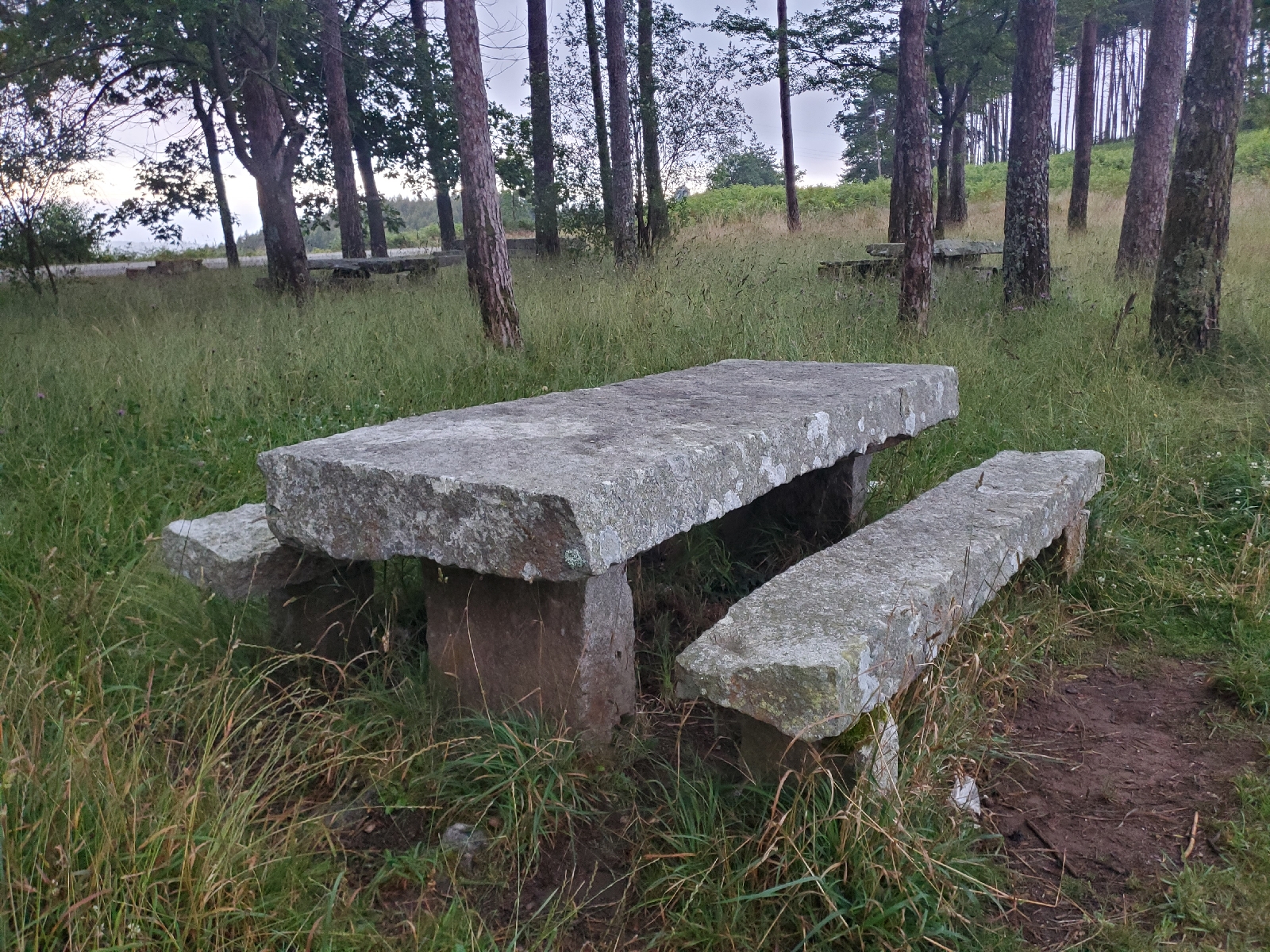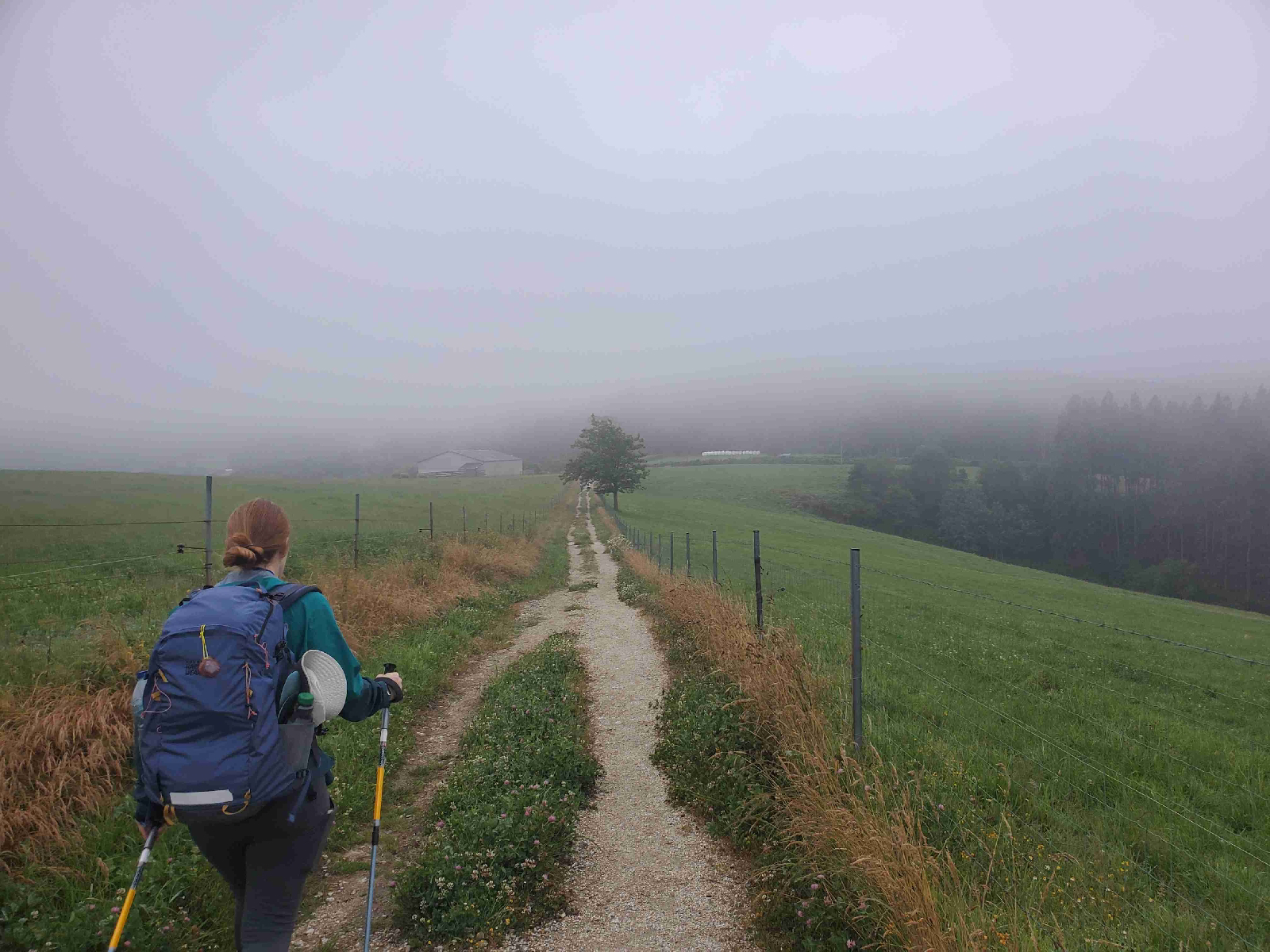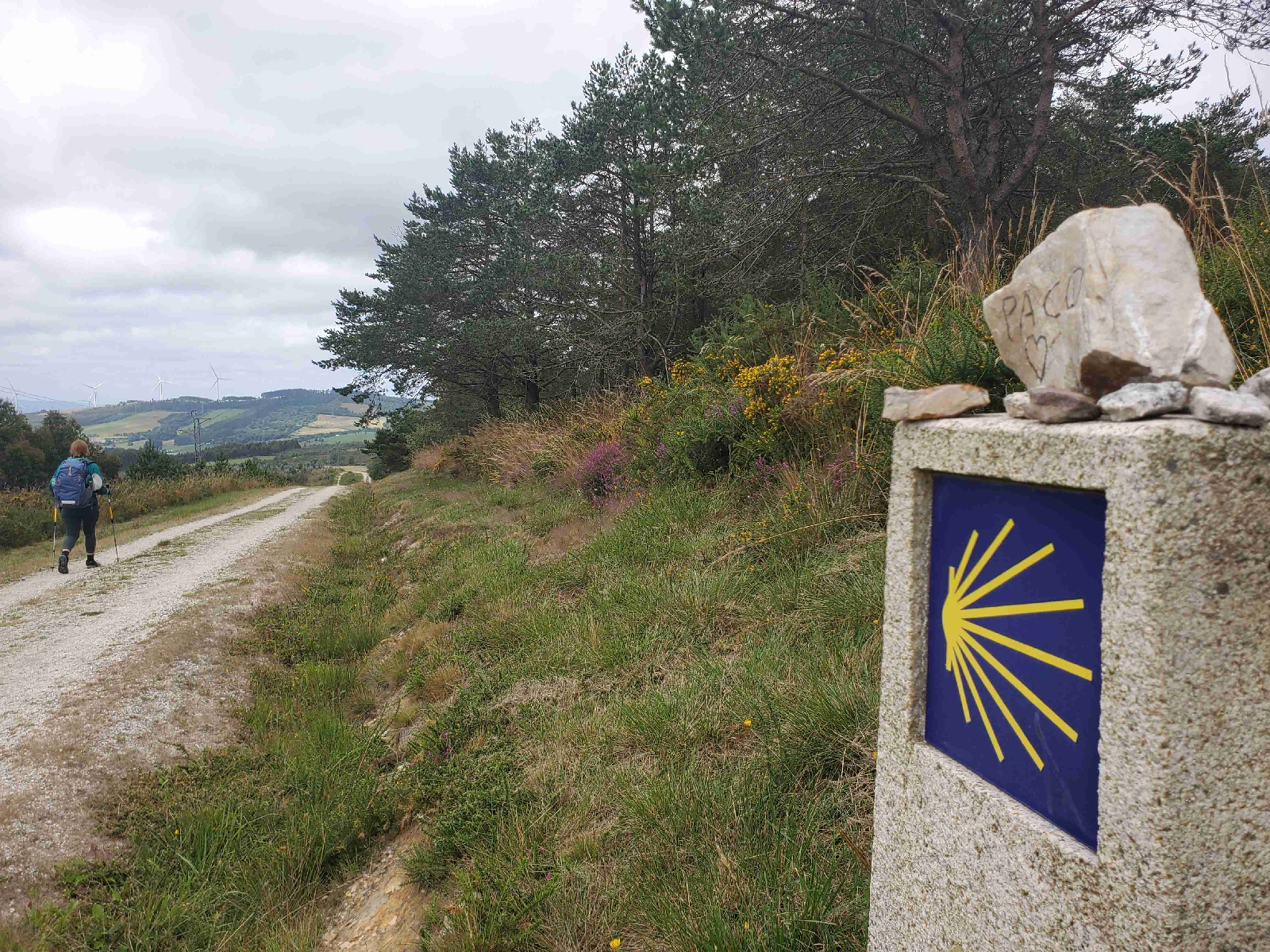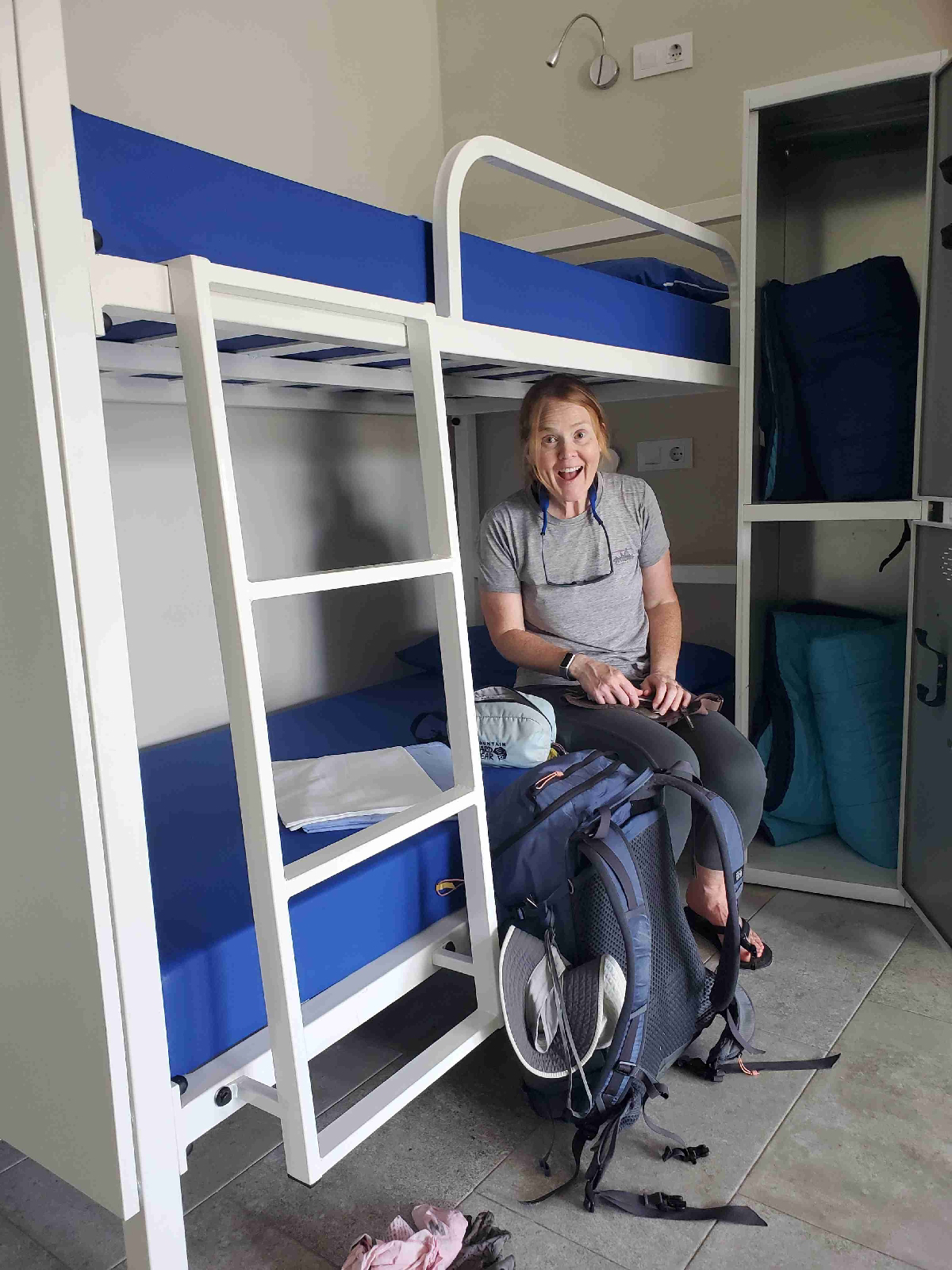The morning began with an uncharacteristic, though much appreciated, deviation from our usual early routine. Instead of the pre-dawn start at 5:15, we indulged in the luxury of an extra half-hour of rest, waking at 5:45am. The delay was strategic; the weather forecast had threatened lingering rain, and we were keen to avoid any remnants of the previous day's rainfall.
The air was brisk as we began our hike from A Fonsagrada, the chill inciting added layers. Apricots donned her jacket, a barrier against the cold, which persisted throughout the day. At times, our breath hung in the air, visible in the frosty morning light, a reminder of the unpredictable weather that could shift at any moment. It never felt perilous, but it certainly avoided comfortable.
Our guidebook had not been encouraging about this leg of the Camino Primitivo. It labeled the path as a “knee breaker,” particularly treacherous in wet conditions. This ominous description added a layer of apprehension to our journey. As we set off on our first ascent, we were greeted by the comforting, rhythmic sound of a cow chewing, its bell clanging in perfect sync with each chew. Chew-ring, chew-ring, it marked our passage, a quaint and grounding start to our day. Cows were are norm, as were their bells. Today would be little different from past days.
As we climbed higher, we ascended into the clouds, the earth falling away beneath us, yet miraculously, the rain held off. The wind turbines stood like silent sentinels, their blades slicing through the air with a gentle whirring that was our only company. The landscape unfolded before us, less a manicured trail through villages and more a rugged hike reminiscent of the Pacific Northwest, with its familiar fog, cool breeze, and pine trees. The eucalyptus, however, added an exotic touch, its fragrance filling the air and its fallen leaves creating a colorful, soft carpet beneath our feet.
Despite our fears, the “knee breaking” descent was manageable. The path turned out to be more of a gravel road than a muddy quagmire, and the descent itself, though challenging, was shorter and less steep than our previous trek down to the reservoir. At the bottom, we arrived upon a tiny café. We had americanos, cheesecake, and walnut bread. We savored our mini breakfast, grateful for the respite and the warmth of the coffee that seeped into our bones.
Refreshed, we resumed our journey. Contrary to our fears, the trail proved to be mostly easy-going, with the previous day's anxiety seeming almost laughable in hindsight. Our knees, though tested, remained intact, a testament to our cautious pace and the relatively forgiving terrain. We had anticipated another café con leche and snack stop further along the route, but found the café closed. Undeterred, we ate from our backpacks, resting on a knoll beside a planted forest of pine trees. The setting was serene, the quiet punctuated only by the whisper of the far off cars on the road.
As we approached our destination, the path led us into O Cadavo / Baleira. This dual-named village held historical significance, often confusing pilgrims with its two appellations. O Cadavo refers to the broader municipal area, while Baleira is the specific village within it. This distinction dates back to administrative practices, but for pilgrims, it simply meant a place to rest.
Our albergue in O Cadavo was a pleasant surprise. It felt like the best one we had stayed in, immaculate and well-organized, a haven of cleanliness and efficiency. The warmth of the hosts and the comfort of the facilities were worth every euro spent, a perfect end to a day filled with unexpected ease.
Looking ahead, tomorrow's journey to Lugo looms large and long, but the promise of mostly flat terrain offers some solace. Lugo, with its rich Roman history and impressive ancient walls, will be our reward, along with a well-deserved rest day. The thought of exploring its historic streets and soaking in its culture provides the motivation needed to face another long day on the Camino.









No comments:
Post a Comment